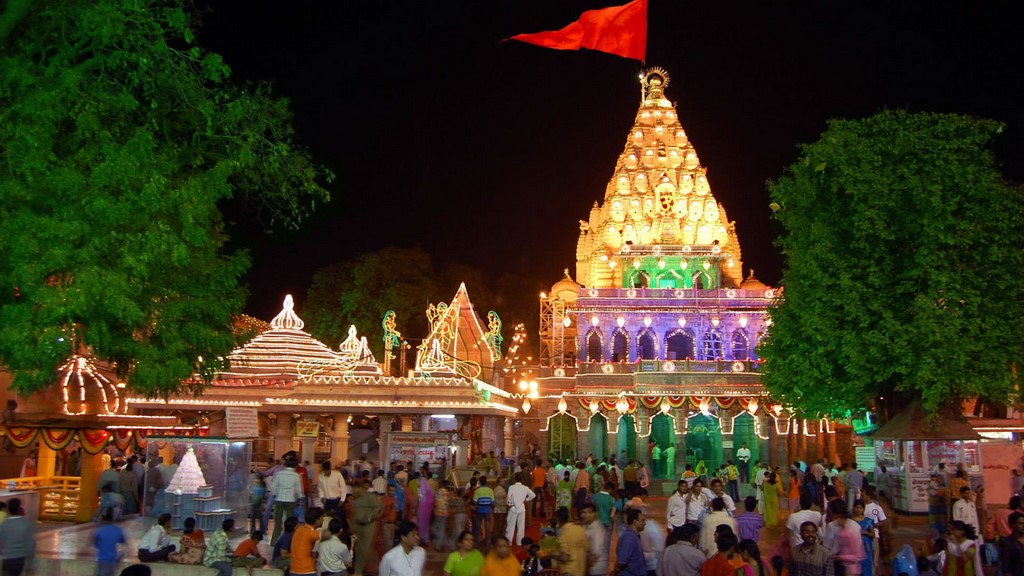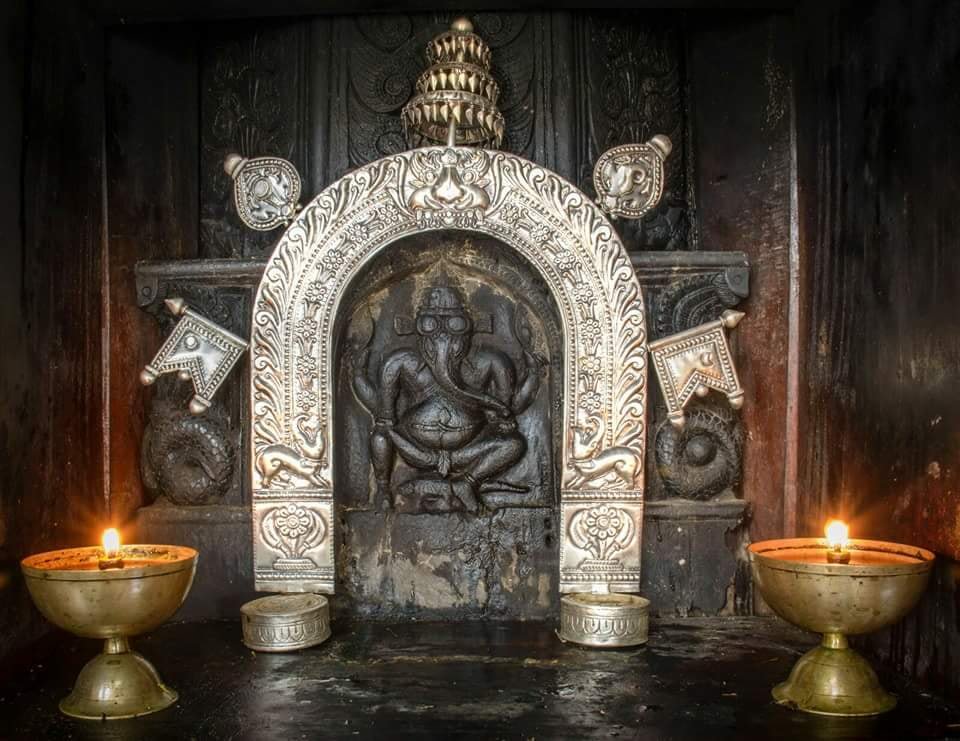Saptapuri, the seven sacred cities of Bharat (India), stand as timeless beacons of Hindu culture and spirituality. Imagine a journey that takes you through the heart of Bharat’s rich religious heritage, a voyage transcending time and space, connecting you to the very soul of ancient wisdom. These cities are not just physical locations; they are spiritual epicenters where stories of gods, goddesses, and saints come alive, resonating deeply with seekers from all walks of life.
The Garuda Purana, with its profound śloka, elegantly encapsulates the essence of these cities:
अयोध्या मथुरा माया काशी काञ्ची अवन्तिका ।
पुरी द्वारावती चैव सप्तैताः मोक्षदायिकाः ॥
The modern names of these seven cities are:
- Ayodhya
- Mathura
- Haridwar (Maya or Gaya)
- Varanasi (Kashi)
- Kanchipuram (Kanchi)
- Ujjain (Avantika)
- Dwarka (Dwaraka)
declaring them as the providers of Moksha, the ultimate liberation. For the young and curious, understanding the Saptapuri is more than a lesson in culture; it’s a call to embark on a journey that transcends the boundaries of the ordinary, inviting them to experience the profound spirituality and timeless heritage of Bharat.
Why should one know about these cities? Each city offers a unique window into the profound depths of Hinduism, revealing lessons in faith, history, and the human spirit. From the serene ghats of Varanasi to the majestic temples of Dwarka, these cities are not just about the divine; they are about discovering oneself in the echoes of the past.
Saptapuri
- Ayodhya Dham: The Birthplace of Bhagawan Shri Rama
- Mathura ji: Where Bhagawan Krishna Danced with Gopis
- Haridwar: The Gateway to the Gods, Where the Ganges Descends
- Varanasi (Kashi): The Eternal City of Light and Moksha
- Kanchipuram: The City of Thousand Temples and Spiritual Wisdom
- Ujjain: The Cosmic Power Center with the Mahakaleshwar Jyotirlinga
- Dwarka: The Ancient Kingdom of Lord Krishna
Let’s dive into the spiritual essence of these seven sacred cities, known as saptapuri, each a jewel in the crown of Hinduism’s rich heritage. Explore with us the divine paths of Ayodhya, Mathura, Haridwar, Varanasi, Kanchipuram, Ujjain, and Dwarka, as we uncover the mystique and sanctity embedded in their ancient grounds.
Ayodhya Dham

Ayodhya dham, revered as the birthplace of Bhagawan Sri Rama, the seventh avatar of Maha Vishnu, is a city that transcends time, with its roots stretching from Treta Yug to Kalyug. This sacred city, exalted as the ‘city of Bhagwan’ in the Atharva Veda, is a beacon of spiritual heritage and divinity. Nestled along the serene banks of the river Sarayu, Ayodhya dham is more than just a geographical location; it’s a symbol of divine presence and historical depth. It was here, by the holy waters of Sarayu, that Bhagawan Sri Rama completed his earthly journey, renouncing his human form to return to Vaikunth Loka. Ayodhya dham, first among the Saptapuri, therefore, stands not just as a city but as a testament to the eternal values and teachings of Bhagawan Rama, attracting millions who seek spiritual solace and enlightenment.
Mathura ji

Mathura, in Uttar Pradesh, is revered as the second of the Saptapuri and is celebrated as the birthplace of Bhagawan Sri Krishna, the divine incarnation of Maha Vishnu. This sacred city, nestled along the right bank of the Yamuna River, is affectionately known as ‘Krishna janmabhoomi’. It’s a place where the echoes of ancient lore and spirituality converge, painting a vivid picture of India’s rich cultural and religious tapestry.
Haridwar

Haridwar, the third esteemed Saptapuri, in Uttarakhand, stands as a spiritual haven where divinity meets humanity. Known as ‘Hardwar’ or ‘Gateway to God’, this sacred city by the Ganges embodies the essence of Hindu spirituality. Here, the Har-Ki-Pauri ghat, a revered site for pilgrims, marks the spot where the River Ganges, emerging from Maha Shiva’s hair, descends to the plains, earning it the name ‘Gangadwara’.
Rich in mythology and history, Haridwar is celebrated for its Kumbh Mela, a massive gathering of faith, and its daily Ganga Aarti, an ethereal experience of light and devotion. As a place where the elixir of immortality, Amrita, is believed to have fallen, Haridwar continues to draw souls from across the world, seeking purification, salvation, and a glimpse of the divine.
Varanasi

Varanasi, also known as Kashi or Banaras, is the fourth revered Saptapuri, steeped in profound spiritual and historical significance. Revered as one of the oldest inhabited cities, Varanasi, situated on the banks of the sacred Ganges and flanked by the Varuna and Asi rivers, is celebrated as a favorite city of Bhagawan Shiva.
Known as the religious capital of Hinduism, its legacy, deeply rooted in the Vedas, resonates through its 23,000 temples and 81 ghats, including the venerated Manikarnika and Dashashwamedh Ghats. The city, a blend of ancient spirituality and cultural richness, hosts grand festivals like Mahashivaratri, drawing pilgrims worldwide.
Varanasi, with its timeless alleys and sacred rituals, not only encapsulates the essence of Hinduism but also offers a profound journey into the heart of India’s spiritual heritage.
Kanchipuram

Kanchipuram, in Tamil Nadu and known as the ‘Kashi of the South’, is the fifth esteemed Saptapuri, rich in spiritual and architectural heritage. Renowned for its legacy that dates back to the Pallava Dynasty and even earlier to the reign of the Cholas, this sacred city, also called Canjeevaram, boasts a remarkable history of over a thousand years.
Home to 108 Shaiva and 18 Vaishnava temples, including the majestic Kamakshi Amman Temple, Kanchipuram is a testament to divine craftsmanship and religious significance. The city, believed to be created by Lord Brahma himself, is a mosaic of exquisite temple architecture and spiritual lore, making it a pivotal pilgrimage destination that mirrors the cultural and religious profundity of South India.
Ujjain

Ujjain, is the sixth sacred city in the Saptapuri and a cornerstone of Hinduism’s spiritual landscape. Known historically as Avantika, this venerable city in Madhya Pradesh was once the illustrious capital of King Vikramaditya and is revered for its deep connection to Lord Shiva. It is celebrated for housing one of the 12 Jyotirlingas, making it a pivotal center of Shaivism.
The city’s rich religious heritage is further highlighted by its association with legendary tales of gods and demons, especially Maha Shiva’s triumph over the demon Tripurasura. Ujjain’s spiritual aura is magnified by the holy Kshipra River, which adds to its sanctity and draws devotees from all over for religious ceremonies and rituals, making it a vital destination for those seeking spiritual enlightenment in the heart of Hindu tradition.
Dwarka

Dwarka, in Gujarat and revered as the seventh sacred Saptapuri, is a city steeped in divine lore and spiritual grandeur. Originally named Kushasthali, this ancient city, believed to be built by Bhagawan Sri Krishna himself, holds a special place in Hinduism as the site where Krishna, the incarnation of Maha Vishnu, established his kingdom after leaving Mathura.
Dwarka, with the majestic Dwarakadheesh Temple, known as Jagat Mandir, at its heart, is a testament to spiritual and historical richness, resonating with legends like the separation of Krishna and Rukmini. This city, once submerged and now standing proudly on the shores of the Arabian Sea, continues to be a beacon of devotion, attracting pilgrims worldwide to experience its sacred aura and deep connection to Krishna’s legacy.
The Saptapuri – Ayodhya, Mathura, Haridwar, Varanasi, Kanchipuram, Ujjain, and Dwarka – are not just destinations but epicenters of spiritual and cultural magnificence in Hinduism. Each city offers a unique and profound experience, making them essential visits for anyone seeking spiritual enrichment.
We encourage you to bookmark this article, share it with friends and family who aspire to embark on this sacred journey, and reach out if you desire more insights into these timeless cities. Visiting these revered Saptapuri is indeed a once-in-a-lifetime journey, one that promises to leave you with a deeper understanding and appreciation of India’s rich spiritual heritage.



